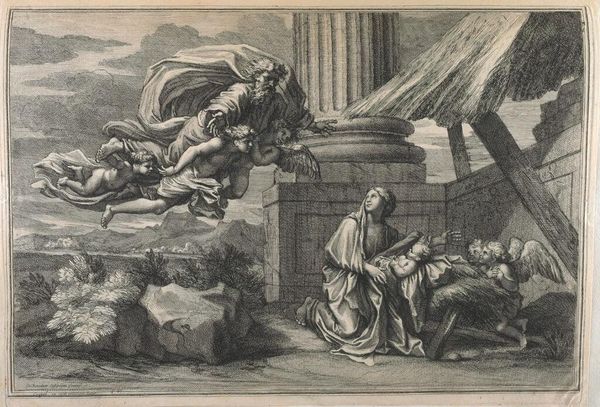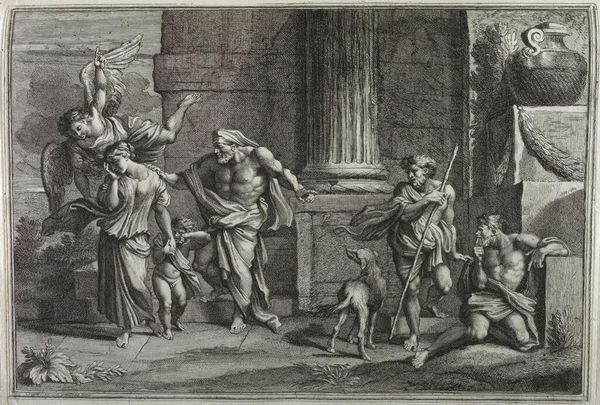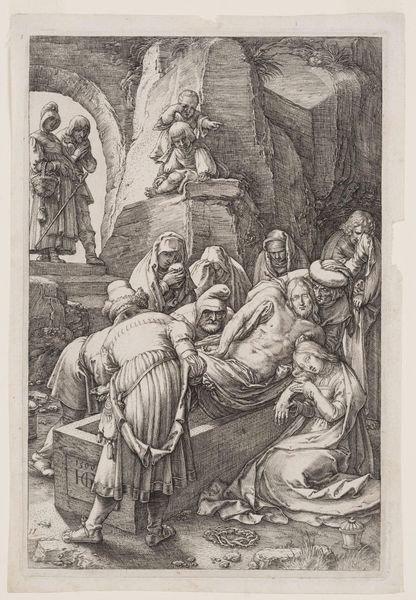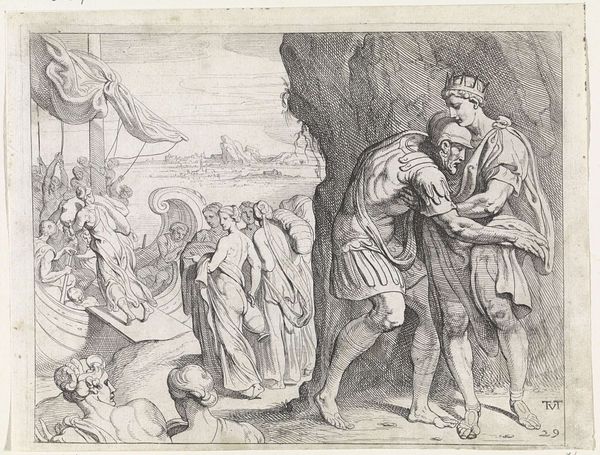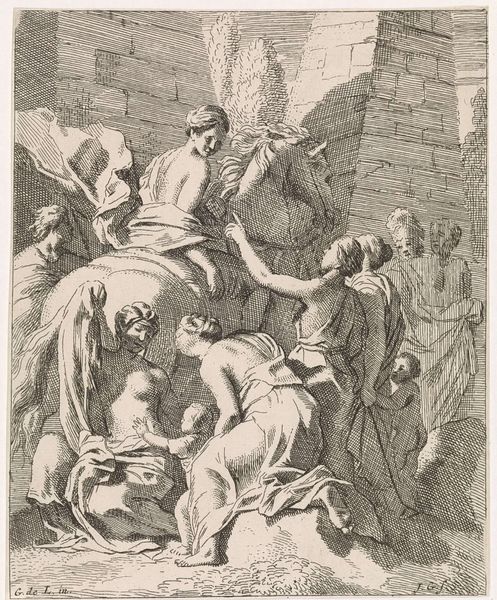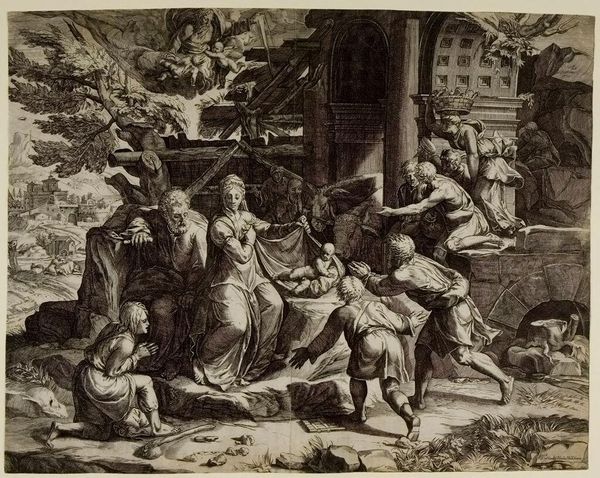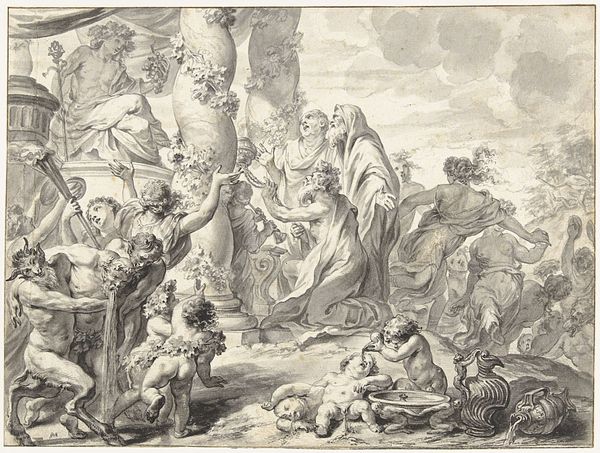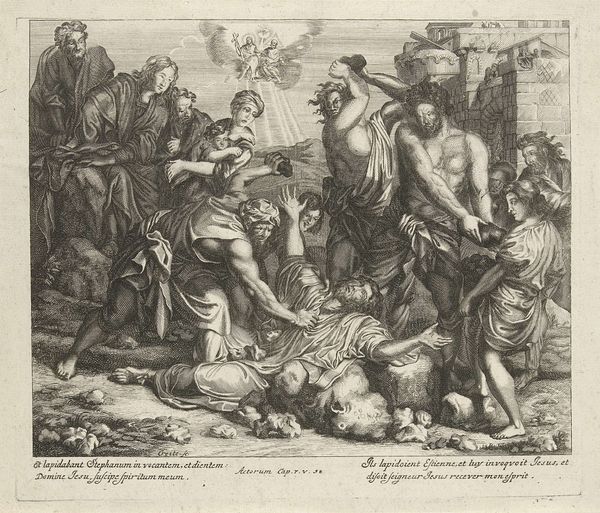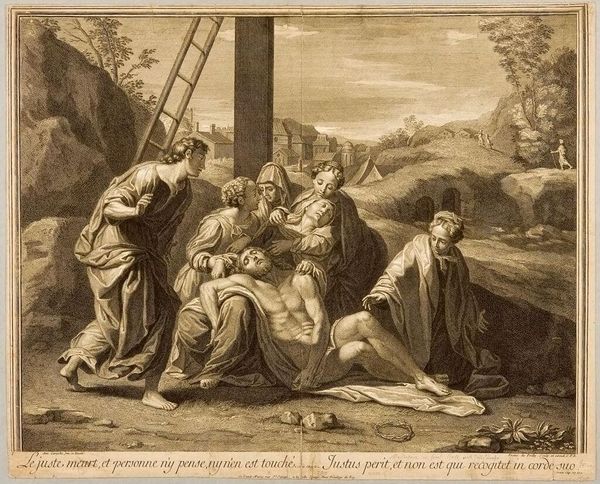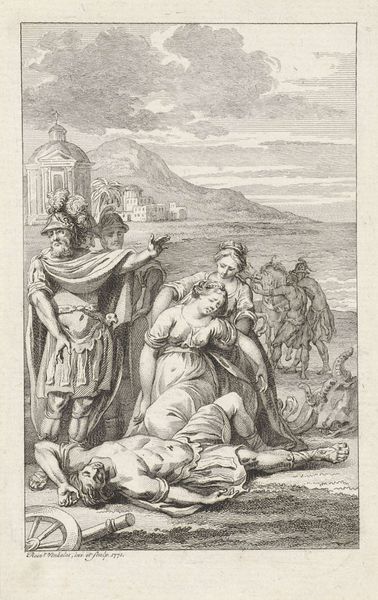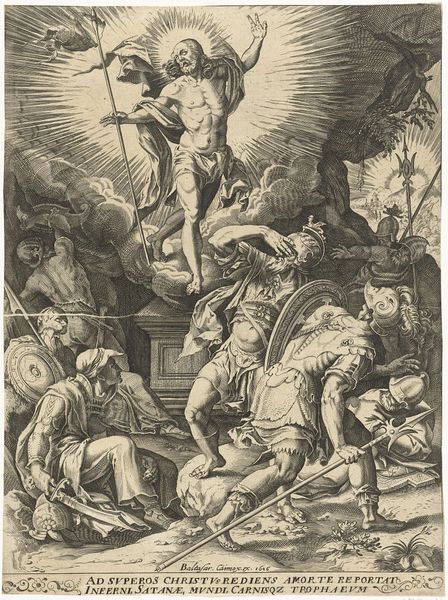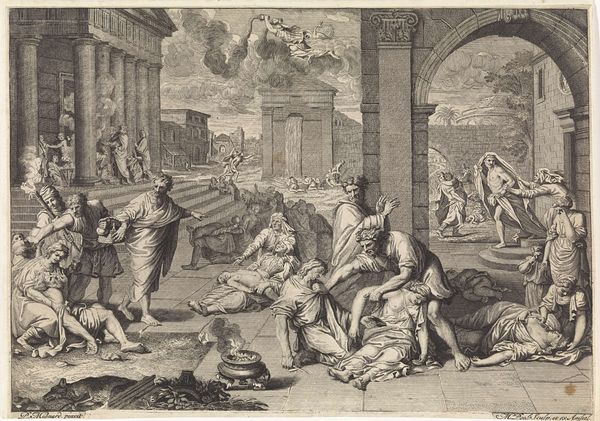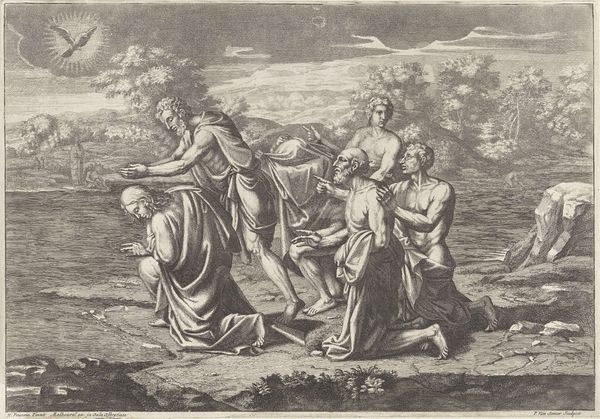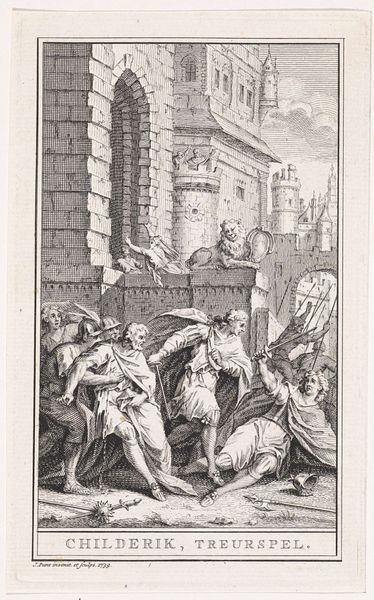
God Apepars to Abraham and his wife c. 17th century
Dimensions: plate: 31.6 x 46.3 cm (12 7/16 x 18 1/4 in.)
Copyright: CC0 1.0
Curator: Charles Macé's plate, "God Appears to Abraham and his wife," presents a striking scene. The plate, measuring roughly 31 by 46 centimeters, depicts a powerful biblical moment. Editor: Immediately, my eyes are drawn to the sharp contrast between the figures on the left—cowering, almost shielding themselves—and the god-like figure seated amidst what looks like classical ruins on the right. Curator: The printmaking process itself—the etching on the plate—creates these intense variations in tone. Notice how Macé uses the medium to emphasize the divine presence. The texture of the paper contributes, too. Editor: Precisely. The tumbled urns and the classical architecture evoke a sense of antiquity and cultural weight. Yet, God’s blessing also carries symbolic importance, suggesting renewal and promise. Curator: What's interesting is that, even in a religious context, the material rendering humanizes Abraham and Sarah, forcing us to confront the labor and the human element in this divine encounter. Editor: Yes, and the visual language—the swirling drapery, the gestures of awe—these aren't just aesthetic choices, but carry centuries of symbolic baggage, connecting this scene to a broader artistic and cultural narrative. Curator: Thinking about the means of production, Macé's choice of printmaking democratized this image, moving it from the exclusive realm of painting to something more accessible. Editor: Seeing it now, I think I better understand how deeply embedded these visual cues are and how they continue to resonate. Curator: And I appreciate how the piece draws attention to the materiality of faith itself.
Comments
No comments
Be the first to comment and join the conversation on the ultimate creative platform.
